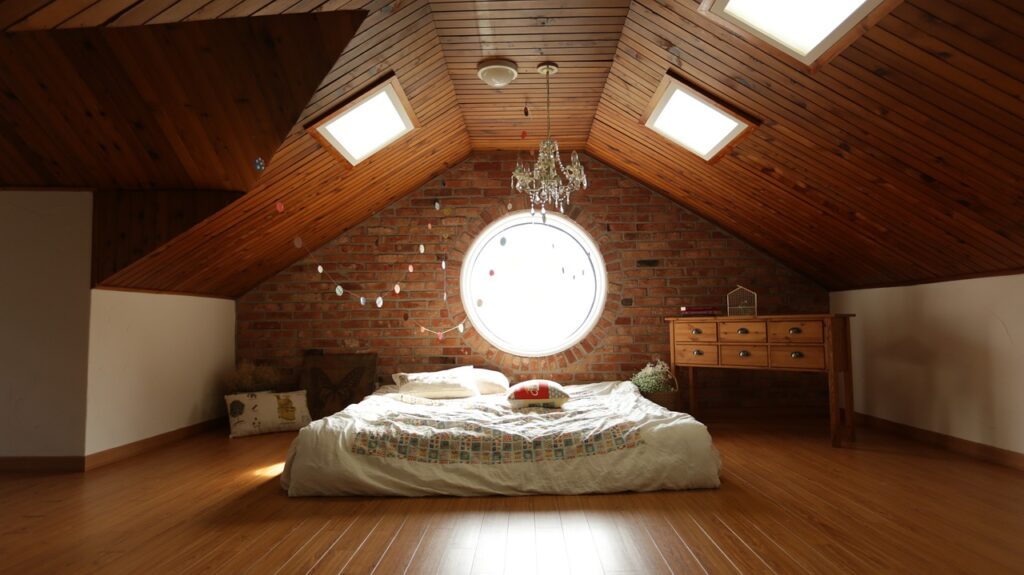The Ultimate Room-by-Room Decluttering Tutorial: Streamline Your Home, Simplify Your Life
DISCLAIMER: Hi I’m Pete with Koszarek Ventures (Kozy Ventures for short), at Kozy Ventures we review products and provide in depth articles that help you with stress management and products that help you live your best life. We review products that we believe in and use, some of our review topics are around saving money, your physical health, your relationships, your kids, your pets and your mental health. Disclosure: Some of the links below are affiliate links, meaning that at no additional cost to you, I will receive a commission if you click through and make a purchase. Read our full affiliate disclosure here. Thanks for reading.
Table of Contents:
Introduction:
Are you feeling overwhelmed by clutter? It’s time to take control of your living space and reclaim your peace of mind.
The Importance of Decluttering for Physical and Mental Well-being
In our fast-paced and busy lives, our homes should serve as a sanctuary where we can relax, recharge, and find solace. However, when our living spaces are cluttered and disorganized, they can become a source of stress and anxiety. Clutter not only occupies physical space but also clutters our minds, making it difficult to focus and find a sense of calm. That’s why decluttering is not just about creating an aesthetically pleasing environment; it’s about improving our overall well-being.
Decluttering has a profound impact on our physical health. Excess clutter accumulates dust, allergens, and can hinder cleaning efforts, potentially leading to respiratory issues and allergies. By decluttering, we create cleaner and healthier living environments, reducing the risk of these health concerns.
Furthermore, decluttering positively affects our mental well-being. Studies have shown that a clutter-free home can alleviate stress, improve concentration, and enhance mental clarity. When our surroundings are organized and uncluttered, we experience a sense of control and harmony, allowing our minds to relax and rejuvenate.
The Purpose of the Article: Your Comprehensive Room-by-Room Decluttering Guide
The purpose of this article is to provide you with a comprehensive room-by-room decluttering guide that will empower you to tackle clutter effectively and systematically. We understand that decluttering can be a daunting task, especially when faced with the overwhelming task of decluttering an entire home on top of the other things in your life that keep you busy. That’s why we’ve broken the process down into manageable steps, focusing on each room individually.
In this guide, you will find practical tips, strategies, and organization techniques tailored to each specific space in your home. From the entryway to the living room, kitchen to bedroom, bathroom to home office, and even the often-overlooked areas like the laundry room and kids’ play areas, we’ll cover them all. By following this room-by-room approach, you’ll be able to tackle clutter systematically, making the process more manageable and achievable.
Whether you’re a busy professional seeking a peaceful haven, a parent trying to create an organized and inviting space for your family, or someone simply longing for a clutter-free home, this guide is for you. Together, we’ll transform your living space into a harmonious and functional environment that nurtures your well-being.
Decluttering Basics:
Before diving into the room-by-room decluttering process, it’s essential to understand the basics of decluttering. Decluttering is the process of removing unnecessary items and organizing the belongings you choose to keep. It brings numerous benefits, such as reduced stress, improved focus, and increased productivity. To begin your decluttering journey, adopt a mindset of letting go and embrace the motivation to create a more serene living environment. So, are you ready to embark on this decluttering journey? Let’s dive into the ultimate room-by-room decluttering guide and unlock the transformative power of reclaiming your living space.
Decluttering Room-By-Room:
The Entryway:
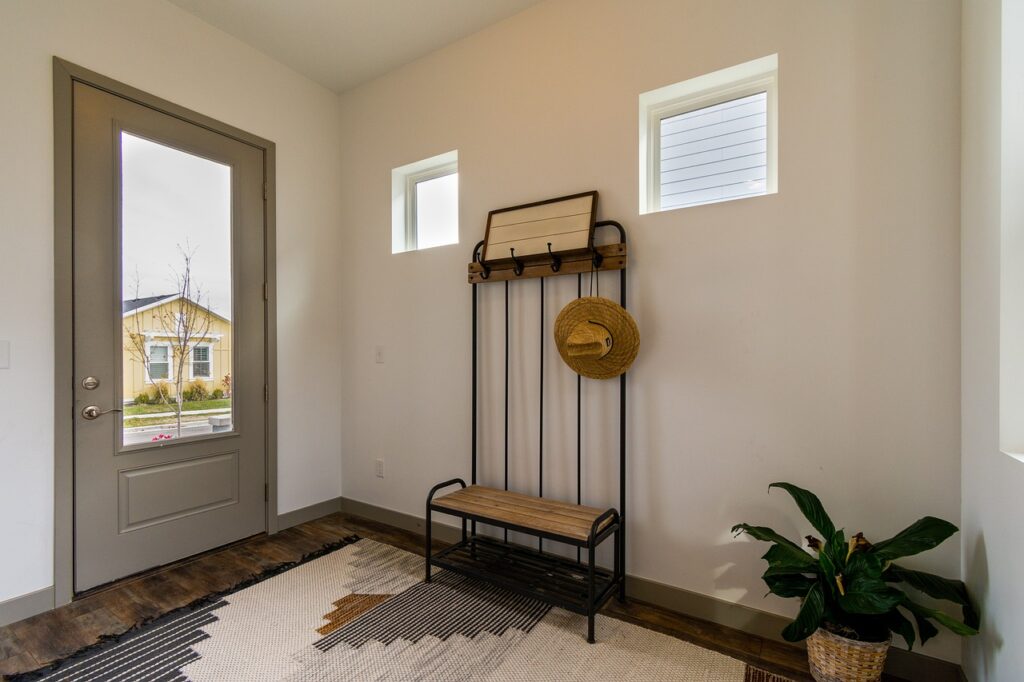
The entryway is the first space guests see when they enter your home. Creating an organized and welcoming entryway sets a positive tone for the rest of your living space. Start by removing any shoes or clutter that accumulates near the entrance. Designate specific storage solutions for coats, jackets, and accessories. Consider installing hooks, a shoe rack, or a stylish bench with built-in storage to maximize functionality and minimize clutter.
1: Clearing the Clutter Near the Entrance
- Remove shoes and other clutter that accumulates near the entrance.
- Create a designated spot for shoes and consider a shoe rack or bench with built-in storage.
2: Designating Storage Solutions
- Install hooks for coats, jackets, and accessories.
- Consider stylish storage solutions like a bench with built-in storage or a decorative basket for smaller items.
3: Maximizing Functionality and Minimizing Clutter
- Use a tray or bowl for keys and small essentials.
- Keep the area clear of unnecessary items and decorations to maintain a clutter-free entrance.
The Living Room:

The living room is often the heart of the home, where family and friends gather to relax and unwind. However, it can easily become a dumping ground for miscellaneous items. To declutter your living room, begin by tackling the surfaces. Clear coffee tables, shelves, and entertainment centers of unnecessary items. Create designated spaces for remote controls, magazines, and other frequently used items. Consider implementing storage solutions such as baskets or decorative boxes to keep items organized but out of sight.
1: Tackling Surfaces and Clearing Unnecessary Items
- Clear coffee tables, shelves, and entertainment centers of unnecessary items.
- Put away items that don’t belong in the living room.
2: Creating Designated Spaces
- Designate spaces for remote controls, magazines, and frequently used items.
- Use decorative boxes or baskets to keep items organized and out of sight.
3: Utilizing Storage Solutions
- Incorporate storage furniture like shelves or a TV stand with built-in storage.
- Use decorative bins or boxes to store items that are not in immediate use.
4: Maintaining an Organized Living Room
- Encourage family members to put away items after use.
- Regularly declutter and reassess the space to maintain an organized living room.
The Kitchen:
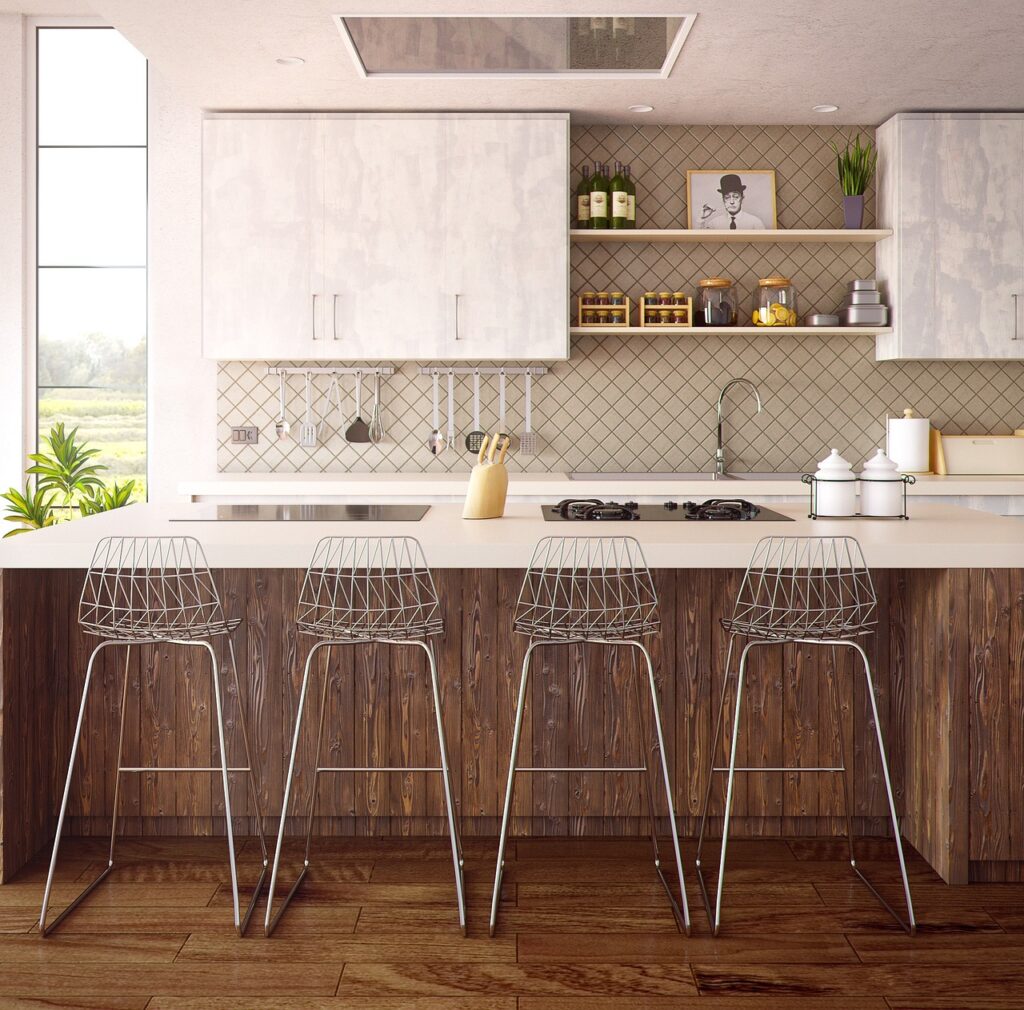
A clutter-free and well-organized kitchen not only enhances efficiency but also makes meal preparation a breeze. Start by sorting through kitchen utensils, cookware, and appliances. Donate or discard items that are no longer needed or in working condition. Declutter food storage areas, including pantries and refrigerators, by removing expired items and optimizing space with bins or stackable containers. Maximize counter space by keeping only essential items within reach and finding proper storage for less frequently used appliances.
1: Sorting Through Utensils, Cookware, and Appliances
- Assess and declutter kitchen utensils and appliances.
- Donate or discard items that are no longer needed or in working condition.
2: Decluttering Food Storage Areas
- Remove expired food items from pantries and refrigerators.
- Optimize space with bins or stackable containers for organized storage.
3: Maximizing Counter Space and Proper Storage
- Keep essential items within reach and store less frequently used appliances.
- Utilize drawer dividers or organizers for utensils and cooking tools.
4: Maintaining a Clutter-Free Kitchen
- Regularly reassess and declutter your kitchen.
- Encourage your family members to clean up after meals and maintain organized storage.
The Bedroom:
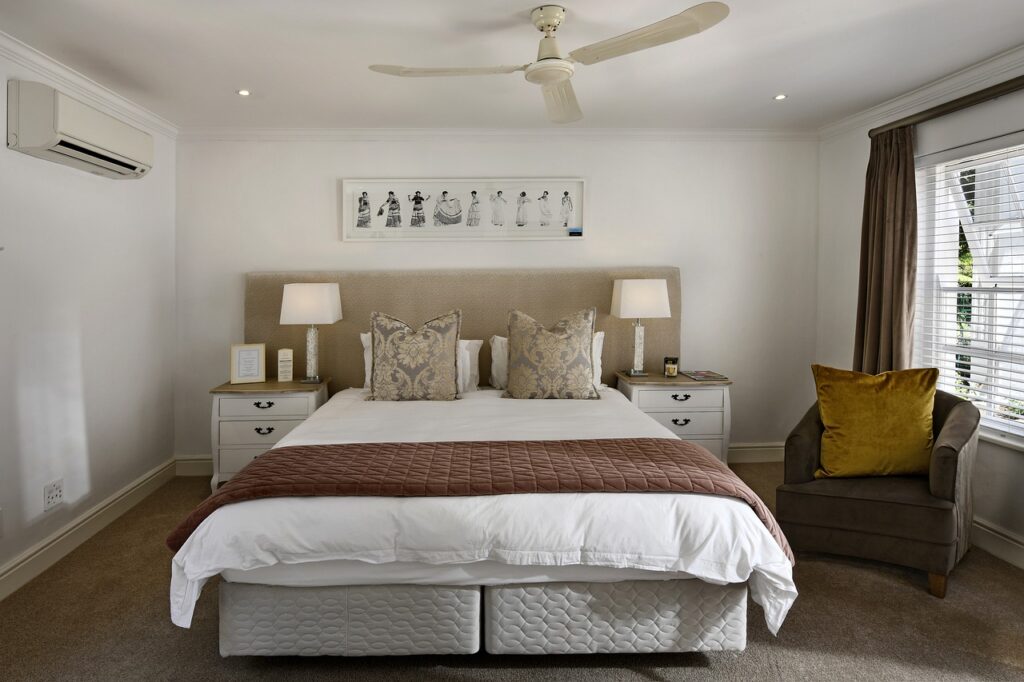
Your bedroom should be a serene and peaceful sanctuary, free from clutter. Begin by decluttering your wardrobe. Sort through clothing items, donate or discard items that no longer fit or you no longer wear. Organize accessories, such as jewelry and shoes, using drawer dividers or storage solutions. Keep bedside tables clutter-free by limiting items to essentials like a lamp, alarm clock, and a book or journal.
1: Decluttering Your Wardrobe
- Sort through clothing items and donate or discard those that no longer fit or are not worn.
- Organize clothing by type or color using drawer dividers or storage solutions.
2: Organizing Accessories
- Utilize jewelry organizers and storage solutions for shoes and accessories.
- Keep bedside tables clutter-free by limiting items to essentials.
3: Maintaining an Organized Bedroom
- Make the bed daily to create a clean and organized look.
- Regularly reassess and declutter the bedroom to prevent accumulation of unnecessary items.
The Bathroom:
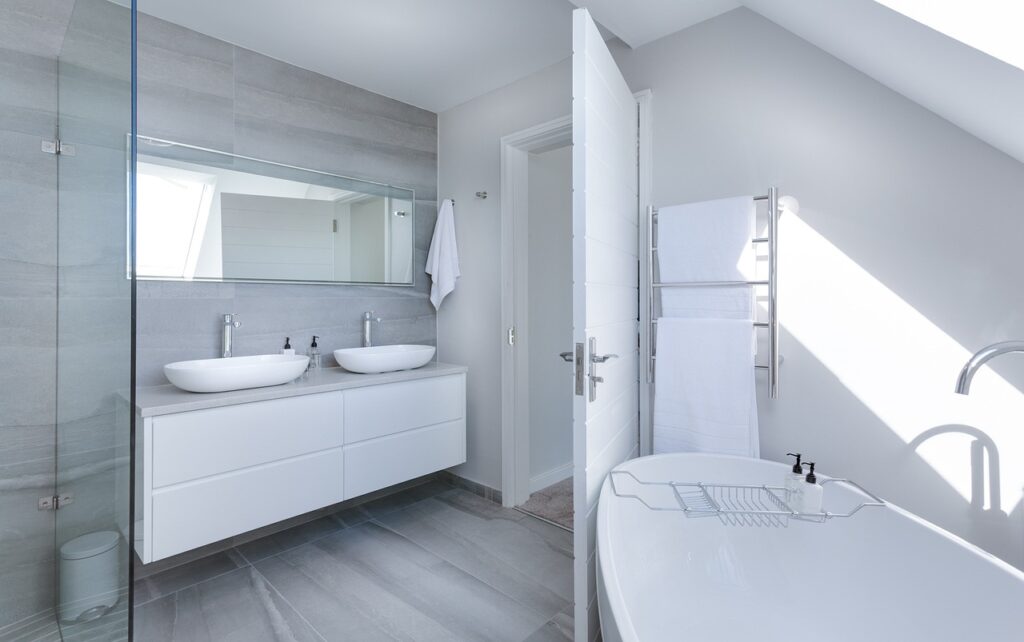
The bathroom is a space where clutter can accumulate easily due to numerous toiletries and grooming products. Start by sorting through these items, discarding expired or unused products. Its important to utilize storage solutions such as baskets, caddies, or wall-mounted shelves to keep countertops and cabinets organized. Consider rolling or folding towels to save space and create a neat appearance. Regularly decluttering your bathroom will help maintain a clean and peaceful environment.
1: Sorting Through Toiletries and Grooming Products
- Discard expired or unused products.
- Streamline your collection and keep only essential items.
2: Utilizing Storage Solutions
- Use baskets, caddies, or wall-mounted shelves to keep countertops and cabinets organized.
- Roll or fold towels to save space and create a neat appearance.
3: Maintaining a Clean and Peaceful Environment
- Regularly reassess and declutter the bathroom.
- Encourage family members to keep the space tidy and organized.
Home Office/Study Area:
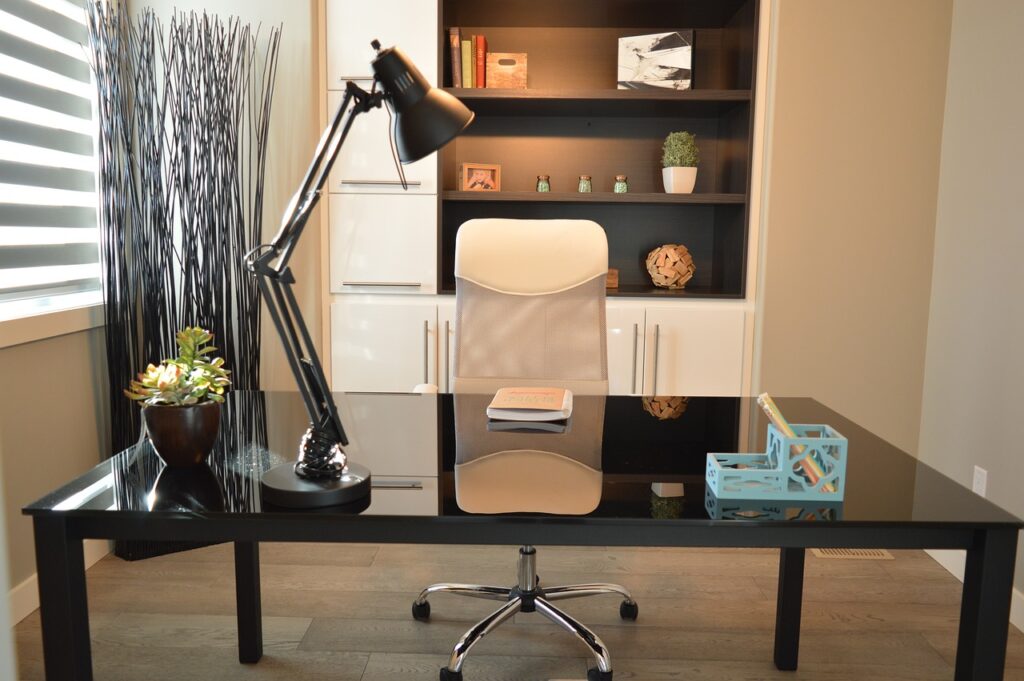
More people are working from home than ever and creating a productive and serene workspace has never been more important.
An organized and clutter-free home office or study area is crucial for maintaining productivity, focus, and creativity. Whether you work from home, pursue hobbies, or need a dedicated space for studying, decluttering and optimizing this area is key. Here’s a step-by-step guide to transform your workspace into an organized haven:
Sort Through Office Supplies, Paperwork, and Files:
Start by assessing your office supplies and decluttering any items you no longer use or need. Donate or discard duplicate or outdated supplies. To continue, categorize and group similar items together, such as pens, markers, and sticky notes. Consider using drawer dividers or storage containers to keep these supplies organized and easily accessible.
Next, tackle paperwork and files. Sort through documents and identify what needs to be kept, what can be archived, and what can be safely shredded or recycled. Finally, create a filing system that works for you, whether it’s through traditional labeled folders or digital file management using cloud storage or organizational software.
Keep the Desktop Clear:
A cluttered desktop can hinder productivity and add unnecessary stress. Take a minimalist approach and keep only the essentials on your desktop. Remove any items that don’t serve an immediate purpose for your work or study tasks. Use a desk organizer or tray to corral frequently used items like pens, notepads, and a calculator.
Utilize wall space by installing shelves or a bulletin board to keep important notes, reminders, or inspirational quotes within sight. This reduces desk clutter and keeps your workspace visually clean and organized.
Invest in Storage Solutions:
To keep your home office or study area clutter-free, invest in practical storage solutions. Consider adding a file cabinet to store documents and files securely. Use desk organizers with compartments for smaller items like paper clips, sticky notes, and USB drives. Utilize stackable storage bins or boxes to neatly store supplies or reference materials that are not in immediate use.
If space permits, incorporate shelving units or bookcases to store books, reference materials, and decorative items. Plus, displaying items in an organized and visually pleasing manner can enhance the overall aesthetic of your workspace.
Manage Charging Cables:
Charging cables for electronic devices can quickly become tangled and create visual clutter. Designate a specific area for charging and manage cables using cable clips, organizers, or even a charging station. Label each cable or use colored cable ties to easily identify and locate the correct charger. This simple step will keep your workspace tidy and prevent cable clutter from becoming a distraction.
Remember, an organized and clutter-free home office or study area promotes focus, efficiency, and a sense of calm. By implementing these decluttering and organizational strategies, you’ll create an environment that fosters productivity and inspires your best work. Say goodbye to the stress of searching for misplaced items or feeling overwhelmed by a cluttered workspace. Embrace the transformative power of an organized and serene home office or study area.
1: Sorting Through Office Supplies, Paperwork, and Files
- Assess office supplies and declutter items no longer in use.
- Categorize and group similar items using drawer dividers or storage containers.
2: Keeping the Desktop Clear
- Remove items that don’t serve an immediate purpose for work or study tasks.
- Use a desk organizer or tray to corral frequently used items.
3: Investing in Storage Solutions
- Consider adding a file cabinet for secure document storage.
- Utilize desk organizers and stackable storage bins for supplies.
4: Managing Charging Cables
- Designate an area for charging and use cable clips or organizers to manage cables.
- Label cables or use colored ties for easy identification.
Other Rooms:
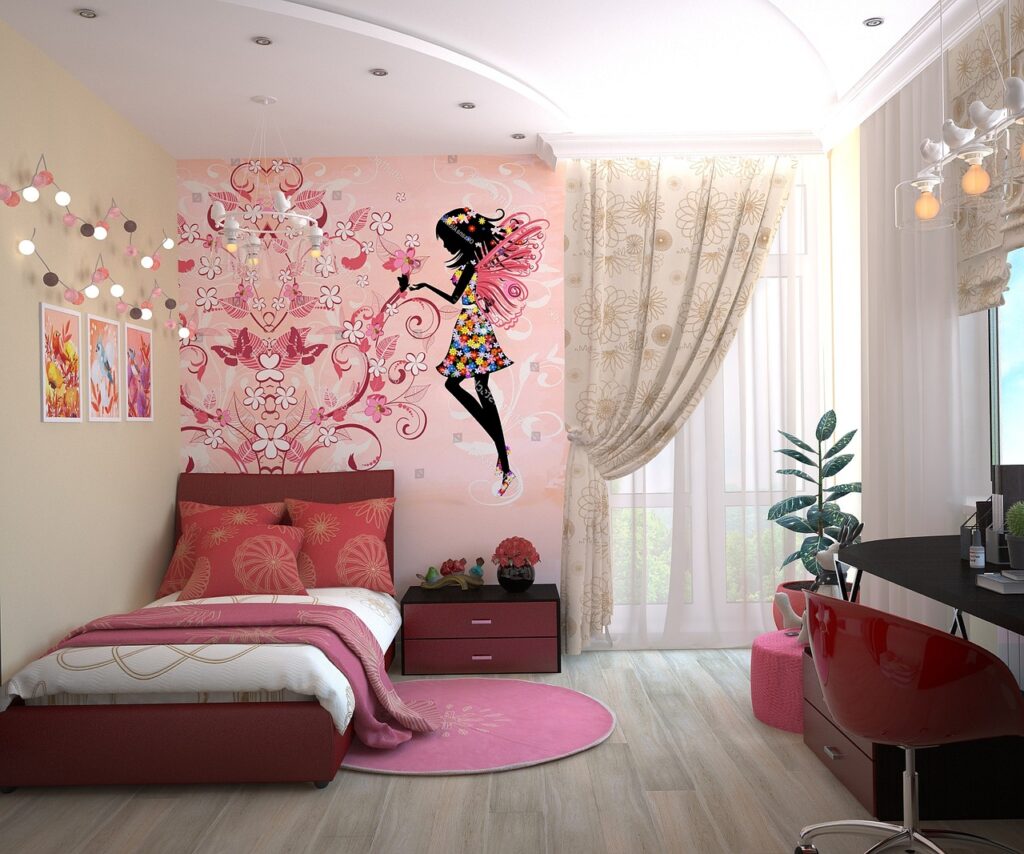
In addition to the main living spaces, it’s important to address clutter in other rooms of your home, such as the laundry room, guest room, and kids’ play areas. Apply the same principles of decluttering and organization to these spaces. Create designated storage solutions, such as bins or shelves, to keep items organized and easily accessible. Encourage family members to participate in decluttering and maintaining these areas for a clutter-free home overall.
- Apply the same decluttering and organizing strategies to laundry rooms, guest rooms, and play areas.
- Create designated storage solutions using bins, shelves, or baskets.
- Encourage family members to participate in decluttering and maintaining these areas.
Design Concept:
Feng Shui
Is an ancient Chinese philosophy that encompasses the art and science of harmonizing energy in living spaces to promote well-being and balance. Based on the belief that our surroundings affect us on a deep level, Feng Shui focuses on the arrangement and flow of energy, known as chi, within our homes and environments.
By intentionally arranging furniture, decor, and elements in accordance with Feng Shui principles, we can create a harmonious and supportive environment that enhances various aspects of our lives, including relationships, health, wealth, and overall happiness. Feng Shui combines intuitive design, spatial arrangement, and the use of natural elements to create spaces that optimize positive energy flow and create a sense of harmony, balance, and vitality.
You can learn to unlock the harmonious energy within your home and transform your life with the power of Feng Shui. Experience the profound effects of aligning your space with ancient principles that promote health, wealth, and overall well-being.
Discover
Feng Shui is the art of arranging your furniture, incorporating natural elements, and optimizing energy flow to create a sanctuary that nurtures your mind, body, and spirit. Enhance your relationships, boost your career prospects, and invite abundance into your life through the transformative power of Feng Shui.
With some understanding of basic feng shui concepts, you can learn how to create a space that reflects your true desires and supports your goals. Whether you’re seeking tranquility, prosperity, or a renewed sense of vitality, our Feng Shui services will help you manifest your dreams and live a more fulfilling life. Click the link below to learn more about these concepts.
Experience the profound impact of Feng Shui in your home today. Unlock the secrets of harmony, balance, and positive energy. Embrace a life of abundance and serenity. Contact us now for a consultation and start your journey to a transformed living space and a revitalized you.
Conclusion: Transform Your Home, Transform Your Life
Congratulations! You have completed the ultimate room-by-room decluttering tutorial and are well on your way to transforming your living space. By decluttering and organizing each room in your home, you have created a harmonious and stress-free environment that promotes peace of mind and productivity. Embrace the newfound freedom that comes with a clutter-free home and enjoy the benefits of a simplified and more enjoyable life.
Decluttering is a journey, and it’s important to be patient with yourself throughout the process. Additionally, you can stay motivated by focusing on the positive impact decluttering will have on your home and overall well-being. Enjoy the transformation as you create a harmonious and clutter-free living space!
Frequently Asked Questions (FAQ):
Q: How long does it take to declutter an entire room?
A: The time required to declutter a room varies depending on the size of the room and the amount of clutter. Start with small, manageable tasks and allocate dedicated time each day or week to gradually work through the decluttering process.
Q: What should I do with items I no longer need?
A: Consider donating usable items to local charities or organizations in need. Also, for items that are no longer usable, dispose of them responsibly according to local regulations And remember to recycle whenever possible.
Q: How can I maintain a clutter-free home after decluttering?
A: Implement organizing systems and designate specific places for each item in your home. Regularly assess your belongings and discard or donate items that are no longer needed. Adopt a habit of returning items to their designated places after use to maintain an organized living space.
Q: Can I involve my family members in the decluttering process?
A: Absolutely! Involving family members in the decluttering process can make it more enjoyable and teach valuable lessons about organizing and letting go. Assign specific tasks and encourage everyone to participate in creating a clutter-free home.
Q: What should I do if I feel overwhelmed during the decluttering process?
A: It’s common to feel overwhelmed, especially when decluttering larger or more cluttered rooms. Break the task into smaller, manageable steps, and focus on one area at a time. Seek support from friends or family members, or consider hiring a professional organizer to provide guidance and assistance.
Thanks for reading!

